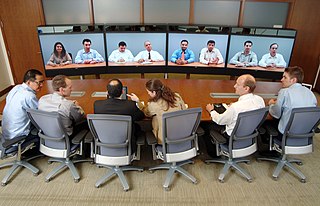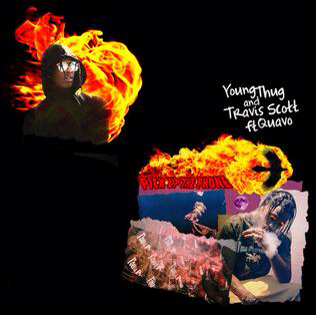
In Japan, mobile phones became ubiquitous years before the phenomenon spread worldwide. In Japanese, mobile phones are called keitai denwa (携帯電話), literally "portable telephones," and are often known simply as keitai (携帯).

A camera phone is a mobile phone which is able to capture photographs and often record video using one or more built-in digital cameras. It can also send the resulting image wirelessly and conveniently. The first commercial phone with color camera was the Kyocera Visual Phone VP-210, released in Japan in May 1999.

The J-SH04 was a mobile phone made by Sharp Corporation and released by J-Phone. It was only available in Japan, and was released in November 2000. It was Japan's second phone with a built-in, back-facing camera. It has a 110,000 pixel CMOS image sensor and a 256 color display. The phone weights 74g, and its dimensions are 127 × 39 × 17 mm. It was succeeded by the J-SH05 flip phone, which was released just one month later. It is also considered to be one of the first phones with polyphonic ringtones.

Videotelephony is the use of audio and video for simultaneous two-way communication.
H.324 is an ITU-T recommendation for voice, video and data transmission over regular analog phone lines. It uses a regular 33,600 bit/s modem for transmission, the H.263 codec for video encoding and G.723.1 for audio.
QuteCom was a free-software SIP-compliant VoIP client developed by the QuteCom community under the GPL-2.0-or-later license. It allows users to speak to other users of SIP-compliant VoIP software at no cost. It also allows users to call landlines and cell phones, send SMS and make video calls. None of these functions are tied to a particular provider, allowing users to choose among any SIP provider.

A video relay service (VRS), also sometimes known as a video interpreting service (VIS), is a video telecommunication service that allows deaf, hard-of-hearing, and speech-impaired (D-HOH-SI) individuals to communicate over video telephones and similar technologies with hearing people in real-time, via a sign language interpreter.

The home of the future, similar to the office of the future, is a concept that has been popular to explore since the early 20th century, or perhaps earlier. There have been many exhibits, such as at World's Fairs and theme parks, purporting to show how future homes will look and work, as well as standalone model "homes of the future" sponsored by builders, developers or technology companies. After a few years, each successive version of such an exhibit will start to look dated and old-fashioned, with some of its "futuristic" things becoming commonplace and others never catching on at all.
A telephone is a telecommunication device which is used to transmit and receive sound simultaneously.
iPhone is a line of smartphones by Apple Inc.

Nokia 5700 XpressMusic is a mobile phone by Nokia, announced on March 29, 2007, as the successor to the Nokia 3250, but also looks very similar to Nokia 5300. It is a Symbian S60 3rd Edition FP1 smartphone that was sold under the XpressMusic sub-brand, which emphasises music and multimedia playback. The Nokia 5700 XpressMusic is a monoblock twistable phone which weighs 115 g. It has a casing made of glossy white plastic, and a black or red mat plastic middle section. There is a rubber flap on the right hand side which covers a microSD hotswap card slot, USB port and charging jack.

The HTC Touch HD, also known as the HTC T828X or its codename the HTC Blackstone, is a Windows Mobile 6.1 Pocket PC designed and manufactured by HTC launched in 2008.

The Iris 3000 is a SIP videophone manufactured by UMEC for ACN Inc. It features a 7-inch screen, CMOS Camera, an idle-time photo frame, and a standard phone jack to attach it to a cordless telephone for use throughout a home. It uses high-speed internet to connect with the service provider's network and thence to worldwide telephone systems.

"Video Phone" is a song recorded by American singer and songwriter Beyoncé for her third studio album I Am... Sasha Fierce (2008). It was written and produced by Beyoncé, Shondrae Crawford and Sean Garrett. A crunk song, it consists of simple lyrics and hidden innuendos. The lyrics refer to putting up a sexy display to be recorded on a video phone. The song was released on September 22, 2009, as the eighth single from I Am... Sasha Fierce. The extended remix, featuring Lady Gaga, was produced by Vybe Chyle and released on November 17. Soon after, Gaga featured Beyoncé on her song "Telephone".
Videotelephony as a concept began to materialize shortly after the telephone was patented in 1876, and its history is closely connected to that of the telephone.

A front-facing camera, commonly known as a selfie camera, is a common feature of cameras, mobile phones, smartphones, tablets, laptops, and some handheld video game consoles. While stand-alone cameras face forward, away from the operator, tablets, smartphones and similar mobile devices typically have a camera facing the operator to allow taking a self-portrait photograph or video while looking at the display of the device, usually showing a live preview of the image. These are called front-facing cameras and are important for videotelephony and the taking of selfies. Often, the preview image is by default a mirror image, which is more intuitive for most people; this default can be overridden, and in any case the recorded image is not reversed.

"Pick Up the Phone" is a song by American rappers Young Thug and Travis Scott featuring fellow American rapper Quavo. It was released on June 3, 2016, by Grand Hustle Records, Epic Records, Atlantic Records and 300 Entertainment. It is the lead single from Thug's mixtape Jeffery (2016) and the second single from Scott's second studio album Birds in the Trap Sing McKnight (2016). The song was written by the artists alongside Starrah, who provides additional vocals, and producers Vinylz. Allen Ritter, Frank Dukes, and Mike Dean.











